Incremental Noise
Perlin & Simplex Noise

{width=80%}
Noise Algorithms
input coordinates → pseudo-random process → noise
- Incremental: generate any part independently.
- Pseudo-random: hard for a human to predict.
- Irreversible: no way to get coordinates from noise value.
Incremental Processes

{width=320}
- Provide a huge open world.
- Generate just what the player explores.
- Can mix in set-pieces or outputs from other generators.
- Might not even have to store results…
[Caveat: narratives of exploration/exploitation are harmful.]{.fragment .standout}
Incremental & Irreversible

{width=320}
- Lots of cool serendipity.
- Few guarantees of specific situations.
- No good way to detect them.
- E.g., where’s the nearest desert in Minecraft?
- Separate algorithm for key structures.
Shuffling for Guarantees
- Shuffling fixed objects guarantees exact global distribution.
- But shuffling is not incremental.
- We must compute and remember the shuffle up front.
- Shuffles can be tiled, but then distribution must repeat.
 {width=100%}
{width=100%}
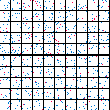 {.pixelated width=50%}
{.pixelated width=50%}
What if… ?
- Can we have an incremental shuffling algorithm?
- Could it be reversible?
Anarchy
Core Features
- Incremental
- Reversible
- Shuffle and distribute items.
- Just random enough to fool humans.
- C, Python, and JavaScript versions.
- 64-bit integer basis (32 in JavaScript).
Reversible PRNG
- Pseudo-random number generators:
- Produce a sequence of unpredictable integers.
- Each seed determines a unique sequence.
- Sequences repeat, but only after a long time.
- Anarchy lets you go backwards in the sequence.
# standard PRNG
next = prng(seed)
# anarchy
next = prng(prev, seed)
prev = rev_prng(next, seed)
Why go Backwards?
- From known seed, could step forward n - 1 times.
- That’s not always practical in complex code.
- Figuring out n can be expensive.
- Lets someone who has a product deduce the seed.
Reversible Shuffling
- Normal shuffle:
- Use ~n time + space (results are stored)
- Use 2n space to also store inverse
- Must compute entire shuffle at once
- Anarchy:
- Incremental: shuffle just the elements you want
- Reversible: also compute pre-shuffle index
Reversible Shuffling
- Technique:
- Combine simple reversible/incremental operations, like circular shift or (perfect) riffle shuffle.
- Set parameters of each operation based on seed.
- Apply reverse operations in reverse order to undo.
- Anarchy has 7 unique operations and applies 15 for each shuffle.
 {width=50%}
{width=50%}
Reversible Shuffling
# standard shuffle
a = [0, 1, 2, 3, 4]
random.shuffle(a) # operates in-place
# anarchy
for i in [0, 1, 2, 3, 4]:
sh = anarchy.cohort_shuffle(i, 5, seed)
assert(
i == anarchy.rev_cohort_shuffle(sh, 5, seed)
)
Reversible Shuffling
- Incremental means we can happily shuffle some portion of millions or billions of elements.
- Reversible means we can figure out where everything went.
- Generation of a world requires world coords → which thing
- Quests can use which thing → world coords
Reversible Distribution
- Shuffling gives an exact global distribution.
- Does not give control over local densities.
- Back to serendipity, but also lack of control.
- We don’t want uniformity, but we want to approach it.
Solution: divide N items among S segments of size C, with α roughness.
Reversible Distribution
- α = 0 → perfectly uniform distribution among segments.
- α = 1 → perfectly random distribution among segments.
- Also specify segment max capacity.
- Still want the process to be incremental and reversible.
distribution_portion(s, N, S, C, α, seed)
# reversible:
distribution_segment(i, N, S, C, α, seed)
# incremental:
distribution_prior_sum(s, N, S, C, α, seed)
 {width=100%}
{width=100%}
 {width=50%}
{width=50%}
Distribution Algorithm
- Compute half of segments and random split point for items.
- Pick first or second part:
- If asking about an item, compare index to item split point.
- If asking about a segment, compare to halfway point.
- Recurse in first or second part with fewer segments
(and probably fewer items).
- Stop if there is only one segment.
Distribution Algorithm
- Takes ~ log2(S) steps, where S is the # of segments
- # of items is irrelevant!
- log2 of anything is pretty small.
- Only computes splits needed for segment/item in question.
distribution_prior_sum allows incremental mapping of distributed items to some other incremental space.
Combined Capabilities
- Incremental algorithms play nice together.
- Shuffle items before distributing them, then shuffle distributed items within each segment (all per-item).
- Reversible algorithms also play nice.
- End-to-end reversibility.
Why Use Anarchy?
- Standard approach: Tweak independent percentage chances for the appearance of each item.
- Only vague control over which items actually appear.
- No direct control over combinations.
- Can’t rely on any specific item appearing.
- Psychologically powerful, but irresponsible.
Why Use Anarchy?
- Anarchy approach: Use fixed distribution of what will appear and distribute/shuffle into slots.
- Exact control over what will appear (can still randomize).
- Hierarchical shuffling can help control combinations.
- Can rely on and even locate specific items.
- Players have guarantees about effort vs. reward.
Demo
https://solsword.github.io/words
 {width=30%}
{width=30%} 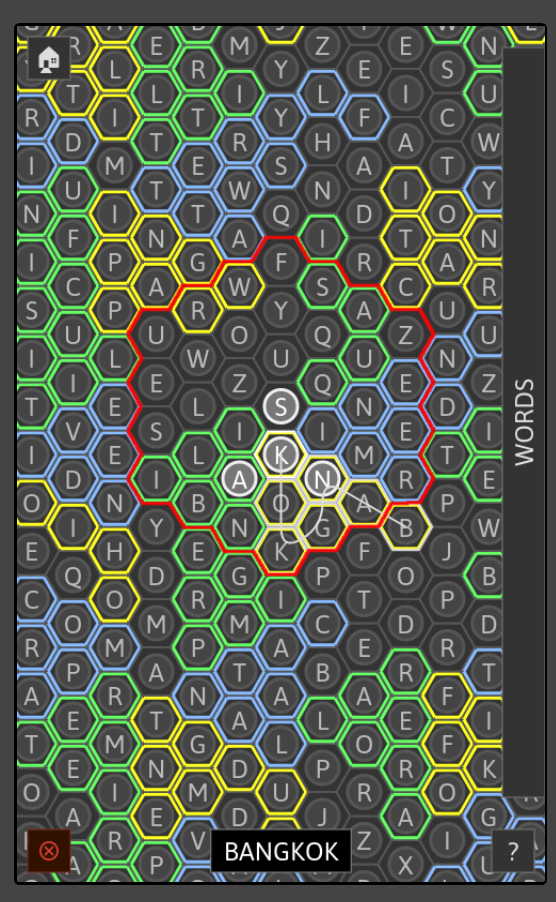 {width=30%}
{width=30%}
Words Game
- Millions of words distributed on hexagonal grid.
- One word for each edge of a “supertile,” up to 12 letters long.
- Longer words get their own entire supertiles (up to 36 letters).
- Space set aside randomly for other languages.
- Eventually add links between language planes.
- We know where each copy of a word is.
- Eventually add quests for specific words.
Quality
Limitations
- Don’t use for statistics or rigorous simulations.
- E.g., shuffling 100 items, there are ~9.3157 orderings.
- But
anarchy determines order by 64-bit seed (264 possibilities).
- Are the
anarchy routines good enough?
Anarchy vs. Mersenne Twister
- Python’s built-in
random uses the Mersenne Twister algorithm.
- 2.5 KB of state
- Period is 219937 − 1.
- Anarchy has 64 bits of state; best-case period is 264.
- Compare
prng and shuffle.
PRNG
anarchy 
{width=6em .pixelated}
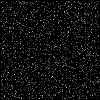
{width=6em .pixelated}
random 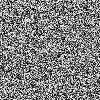
{width=6em .pixelated}

{width=6em .pixelated}
Shuffle
anarchy 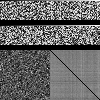
{width=8em .pixelated}
random 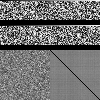
{width=8em .pixelated}
Distribution
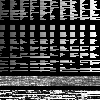
{width=50% .pixelated}
Bonus Demo
Log-time Incremental Algorithms
- Anarchy’s distribution is a log-time incremental algorithm
- Can guarantee certain properties using recursion
- A good fit for fractal stuff
- Log-time is basically as good as constant-time
- What else can you do with log-time algorithms?
https://solsword.github.io/labyrinfinite
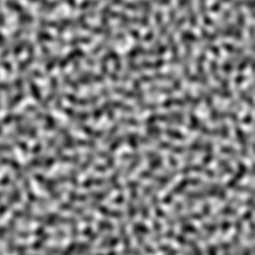
 {width=80%}
{width=80%}

 {width=80%}
{width=80%}
 {width=320}
{width=320}
 {width=320}
{width=320}
 {width=100%}
{width=100%}  {.pixelated width=50%}
{.pixelated width=50%} {width=50%}
{width=100%}
{width=50%}
 {width=30%}
{width=30%}  {width=30%}
{width=30%}  {width=6em .pixelated}
{width=6em .pixelated}  {width=6em .pixelated}
{width=6em .pixelated}
 {width=6em .pixelated}
{width=6em .pixelated}  {width=6em .pixelated}
{width=6em .pixelated}
 {width=8em .pixelated}
{width=8em .pixelated}  {width=8em .pixelated}
{width=8em .pixelated}
 {width=50% .pixelated}
{width=50% .pixelated}